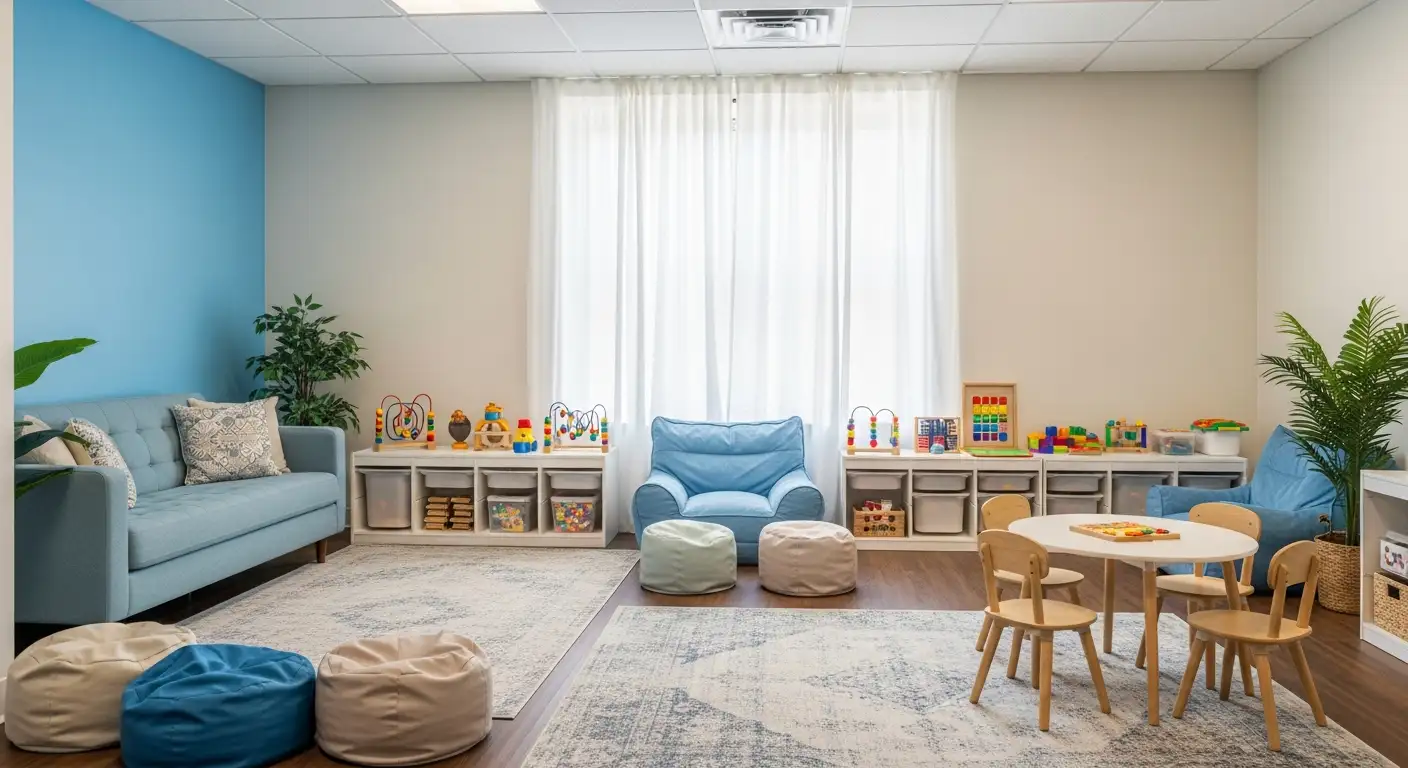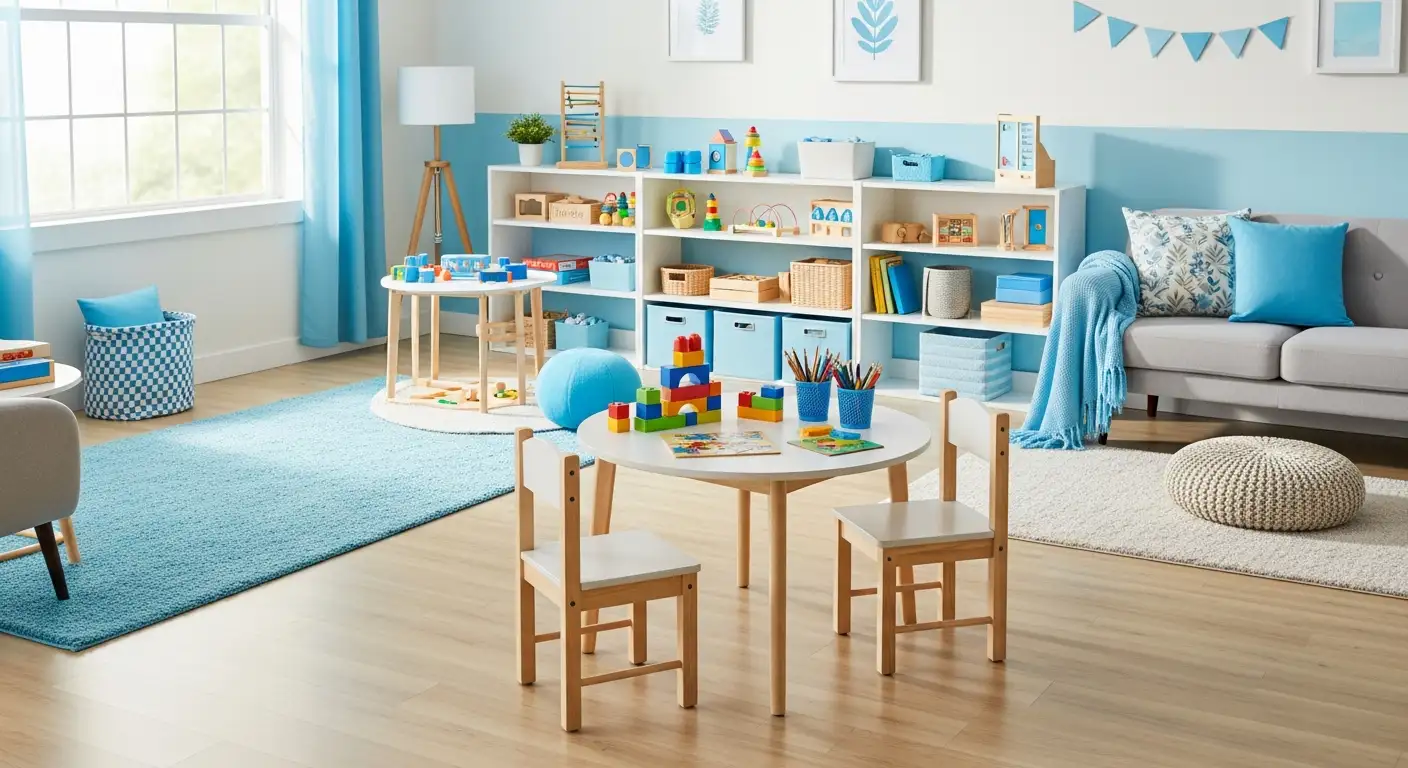Why Consistency is a Cornerstone in ABA Therapy
Consistency in in-home ABA therapy services is pivotal for fostering meaningful progress in children with autism. It underpins skill acquisition, emotional stability, and generalization of learning across various settings, making it a fundamental element of effective treatment. This article delves into how maintaining regular schedules and collaborative strategies can maximize therapy outcomes, support development, and strengthen caregiver and therapist partnerships.
The Critical Role of Routine in Autism Development
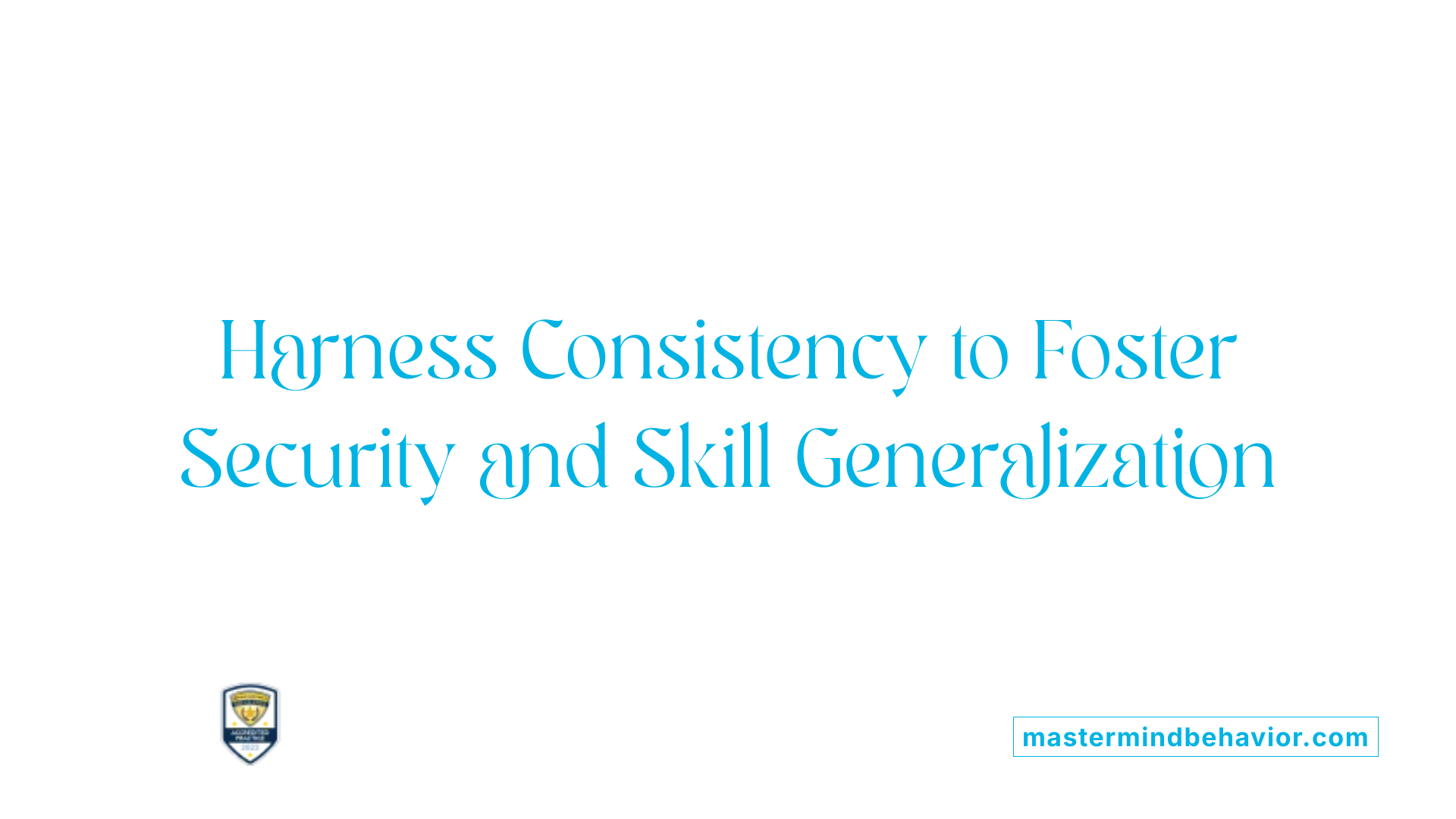
Why do autistic people need consistency?
Autistic individuals thrive on routines because they offer predictability, which helps reduce feelings of anxiety and confusion. When routines are stable and predictable, children feel more secure and are better able to understand what to expect throughout their day.
Establishing consistent routines involves using visual schedules, reinforcement strategies, and structured activities. These approaches make transitions smoother and give children a sense of control, decreasing stress and behavioral challenges.
Consistency isn't just about routines; it also encompasses applying similar behavioral principles across different environments such as home, school, and therapy settings. This uniformity helps children generalize skills significant for daily life, such as communication, self-care, and social interactions.
Using techniques like prompt fading, shaping, and modeling within a consistent framework accelerates learning and skill acquisition. Moreover, predictable environments make learning less overwhelming, especially for children sensitive to sensory inputs.
Maintaining routines also supports behavioral management by reinforcing positive behaviors and reducing triggers for challenging behaviors. When everyone involved—therapists, caregivers, teachers—implements consistent strategies, children progress faster and with fewer setbacks.
Overall, consistency creates a stable foundation for growth. It enables children with autism to navigate their world more comfortably, develop independence, and build lasting skills that transfer across different areas of life.
How Consistency Boosts Therapy Outcomes and Skill Development

How does consistency influence progress and therapy outcomes in ABA therapy?
Consistency is a fundamental element in enhancing the effectiveness of ABA therapy for children with autism. When behavioral strategies, routines, and reinforcement methods are applied uniformly across sessions, environments, and caregivers, children are more likely to internalize and generalize new skills. This predictability helps reduce anxiety by creating a stable and secure learning atmosphere.
Furthermore, consistent ABA sessions enable ongoing skill development without regression. Each session builds on previous achievements, ensuring steady progress. Regular communication and collaboration among therapists, parents, and teachers are essential to maintain this uniformity, creating a seamless support system that reinforces learning.
Data collection plays a vital role as well. Through meticulous tracking of behaviors and progress, therapists can tailor and adapt intervention plans to meet the child's evolving needs. This personalized approach, grounded in consistency, promotes better outcomes and accelerates skill acquisition.
Ultimately, consistency in ABA therapy nurtures trust and emotional stability, fostering a positive environment where children can thrive and develop vital social, communication, and behavioral skills.
How does routine and consistency promote engagement and motivation?
Children with autism benefit greatly from predictable routines because they offer a sense of security. Knowing what to expect reduces their anxiety and encourages active participation in therapy activities.
Consistent sessions, scheduled regularly, help reinforce the connection between effort and reward. When learning experiences are familiar, children are more motivated to engage, resulting in better focus and increased perseverance.
Routine and structured environments also support behavioral momentum. Starting with easier tasks and gradually progressing encourages incremental successes, which build confidence and motivation.
Over time, this consistent approach cultivates a positive attitude toward learning and therapy, leading to sustained engagement and continuous progress.
How does building trust through consistency enhance therapy?
A key to successful ABA therapy is establishing a strong, trusting relationship between the child and the therapist. Consistency in interactions—such as predictable responses, reinforcement, and routines—helps children feel safe and understood.
When children trust their therapist, they are more willing to explore, try new skills, and participate in challenging tasks. This emotional security is crucial for effective learning and behavior change.
Regular, dependable sessions foster this bond, making therapy a safe space for growth. The trust built through consistency increases the child's motivation and readiness to learn.
How do data collection and individualized plans contribute to better outcomes?
Consistent data collection during ABA therapy allows therapists to monitor progress precisely. Regular assessments help identify which strategies are effective and where adjustments are needed.
Personalized treatment plans, based on continuous data, ensure the intervention remains relevant and effective, promoting optimal skill acquisition.
Adapting plans in real-time prevents stagnation and addresses emerging challenges, leading to more meaningful and lasting behavior change.
What are the long-term benefits of consistent ABA therapy?
Long-term engagement in ABA therapy, marked by consistency, can lead to significant improvements in independence, academic success, and social relationships. Children learn to apply skills across settings, which boosts their confidence and autonomy.
Consistent therapy also fosters better generalization of skills, making everyday life more manageable and enriching for the child.
Moreover, families and caregivers become more empowered to support ongoing development, reinforcing skills outside therapy sessions.
In summary, maintaining regular, predictable ABA sessions not only accelerates skill mastery but also promotes enduring positive behavior changes, offering lasting benefits that extend into many areas of the child's life.
The Impact of Scheduling and Routine on Child Development
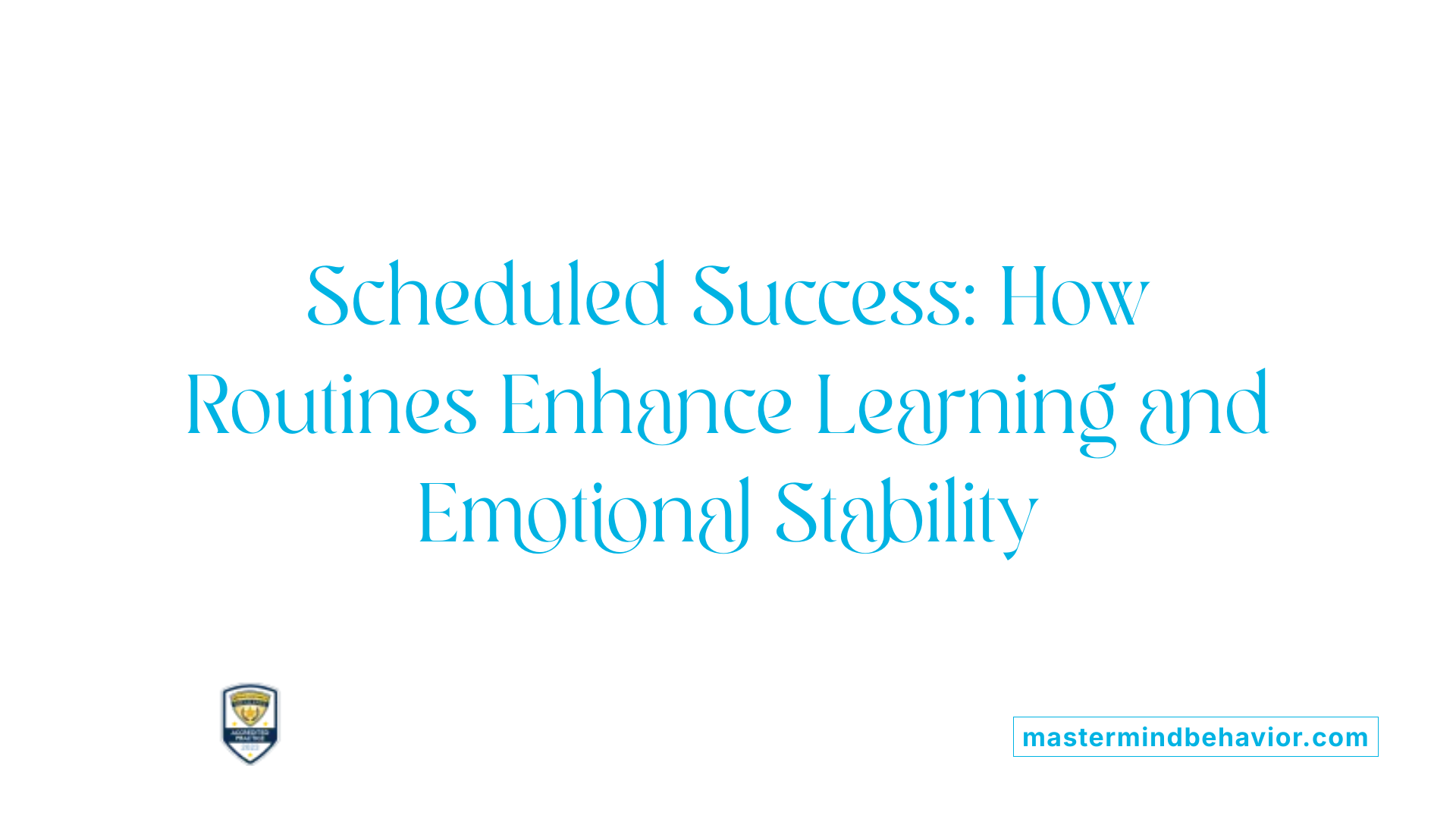
What is the impact of scheduling and routine on a child's development and therapy efficacy?
Scheduling and routines are fundamental components of effective therapy and healthy development for children, especially those with autism spectrum disorder (ASD). These practices create a predictable environment that helps children feel secure and less anxious.
A stable routine supports behavioral regulation by setting clear expectations and reinforcing positive behaviors. For children participating in ABA therapy, consistency in sessions helps in skill acquisition, generalization, and retention. Regular schedules enable children to understand when and how activities will happen, reducing uncertainty that can lead to stress.
In terms of mental health, routines serve to lower stress levels, as predictable environments promote emotional stability. Children are more likely to engage fully in therapy sessions when they know what to expect, which also increases motivation and focus.
Adherence to routines often varies based on the child's cognitive and language abilities. Incorporating visual aids or involving children in routine-setting can enhance understanding and adherence, especially for nonverbal children.
Flexible yet consistent routines allow children to adapt to changing circumstances without losing the sense of security. This balance supports their independence and long-term emotional resilience.
Overall, well-structured and personalized routines improve daily functioning, reinforce therapeutic gains, and foster developmental progress. They are vital for reducing challenging behaviors, supporting communication, and ensuring that therapy translates into real-world skills.
As routines are tailored to individual needs, they facilitate better outcomes in behavioral and emotional growth, ultimately leading to more meaningful integration of learned skills into everyday life.
Promoting Consistency Across Settings in ABA Therapy

How can consistency be promoted across different environments in ABA therapy?
Ensuring consistency in ABA therapy across various settings such as home, school, and community centers is vital for maximizing a child's learning and skill retention. One effective approach is implementing uniform strategies and routines. This involves using visual supports like schedules, cues, and checklists consistently across all environments.
Visual supports help children anticipate what will happen next, reducing anxiety and increasing predictability. For example, a visual timetable in both the classroom and at home helps children understand daily expectations and transitions.
Consistent reinforcement techniques and responses are essential. When caregivers and educators use the same prompts, praise, and consequences, children find it easier to generalize behaviors learned during therapy.
Another crucial aspect is fostering strong collaboration among all involved parties. Therapists, parents, teachers, and caregivers should share information regularly and follow aligned intervention plans, such as Behavior Intervention Plans (BIPs). Open communication ensures everyone remains on the same page, enabling consistent application of strategies.
Structured routines and sensory-friendly environments also support this effort. Predictable daily schedules and specially designed, calming spaces reduce anxiety and promote engagement across different settings.
Additionally, ongoing training and adapting strategies based on data collected during sessions help maintain consistent and effective interventions. This continuous cycle of evaluation and modification supports the child's progress and helps maintain treatment uniformity.
Summary Table of Strategies for Cross-Setting Consistency
| Strategy | Implementation Example | Purpose |
|---|---|---|
| Uniform strategies | Same prompts, reinforcement techniques used in all environments | Facilitates skill generalization |
| Visual supports | Schedules, cues at home, school, therapy | Promotes predictability and understanding |
| Collaboration and communication | Regular meetings, shared data, parent-teacher conferences | Ensures consistent application of plans |
| Structured routines and sensory spaces | Predictable daily schedule, calm sensory areas | Reduces anxiety, encourages focus |
In conclusion, promoting consistency involves a team effort, clear communication, and standardized strategies across all environments. This cohesive approach helps children with autism thrive by reinforcing their learned skills and providing stable, supportive contexts for development.
In-Home ABA Therapy: Personalized and Convenient Support

Why is in-home ABA therapy effective for skill development?
In-home ABA therapy provides a familiar and comfortable environment for children with autism, which enhances learning and engagement. Families have the opportunity to observe and actively participate in therapy, gaining insights into behavioral strategies that can be reinforced at home. This immediate involvement helps ensure consistency across different settings, which is vital for skill generalization.
Therapists tailor interventions specifically for the home context, focusing on real-life skills such as communication, self-care, and behavior regulation. They incorporate natural teaching moments within daily routines, making learning relevant and meaningful. Techniques like prompting, fading, shaping, and modeling are used during sessions to encourage desired behaviors.
Data collection is a crucial part of in-home therapy. It allows therapists to monitor progress meticulously and make data-driven adjustments to the treatment plan. This ongoing assessment ensures that goals remain aligned with the child's evolving needs.
The flexibility of scheduling sessions reduces disruptions to family routines, creating a consistent and predictable environment that fosters comfort and security. With trained professionals often overseeing the program, in-home ABA therapy merges personalized support with the convenience necessary for lasting progress and independence.
Benefits of in-home ABA therapy include:
- Promoting real-life learning within a familiar setting
- Increasing family involvement and consistency
- Customizing interventions based on the home environment
- Facilitating continuous progress monitoring and adjustments
- Supporting behavioral improvements and skill generalization
By integrating therapy into everyday routines, in-home ABA creates a seamless bridge between clinical goals and daily life, reinforcing skills and reducing challenging behaviors effectively.
The Significance of Building Trust and Training Families
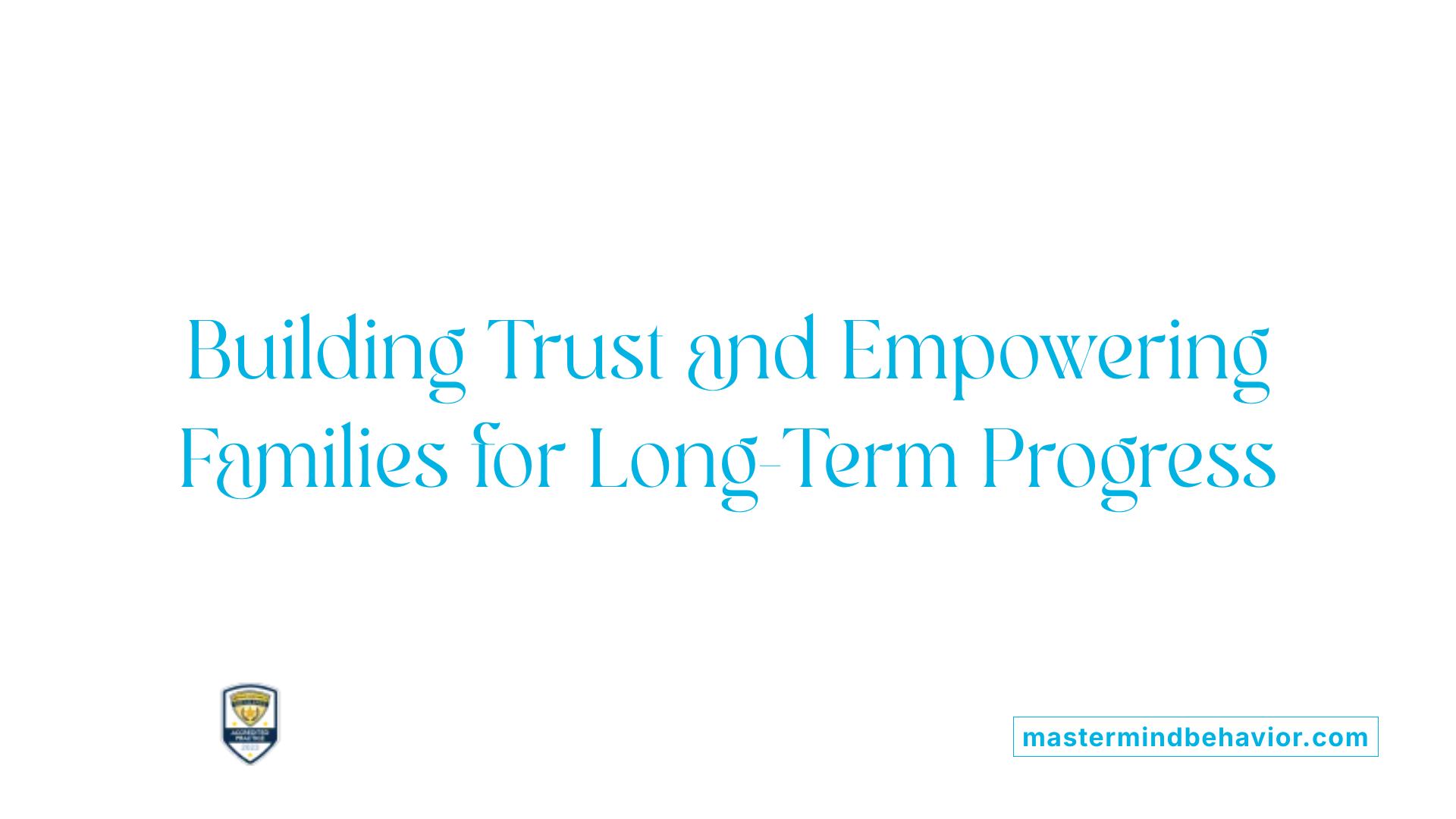
How does consistency foster trust and family engagement in ABA therapy?
Establishing trust between the therapist and the child is essential for successful ABA therapy. Consistent application of behavioral strategies and routines helps in building this bond. When therapy sessions follow a predictable schedule and environment, children feel secure, which encourages active participation and reduces anxiety.
Family involvement is crucial. Regular communication and participation foster a collaborative atmosphere. When parents and caregivers understand and implement the intervention strategies consistently, the child's progress accelerates. This shared effort creates a sense of partnership, boosting confidence and motivation for everyone involved.
Training caregivers in behavioral techniques such as prompting, fading, and shaping is vital. When families learn these methods and apply them consistently at home, skills learned during therapy are better generalized to everyday life.
Ongoing collaboration between therapists and families ensures that everyone's efforts are aligned. This consistency in approach and reinforcement not only improves skill retention but also builds trust in the therapy process.
In summary, consistency in sessions, communication, and caregiver training strengthens the relationship between the therapist, child, and family. It creates a stable environment for learning, boosts family confidence, and leads to more sustainable, long-term behavioral improvements.
Maximizing the Benefits of Consistency in In-Home ABA Therapy
Implementing and maintaining consistency across therapy sessions, environments, and caregivers is essential to maximizing the effectiveness of in-home ABA services. Through structured routines, collaborative planning, and ongoing communication, children with autism can experience steady progress, skill retention, and improved independence. Consistency not only supports learning but also fosters a secure, trusting relationship between therapists, families, and children, ensuring that therapeutic gains translate into meaningful, lifelong benefits. Emphasizing routine and predictability ultimately paves the way for a more confident, capable, and autonomous future for children with autism.
References
- 8 Reasons to Prioritize ABA Therapy: Consistency is Key
- Unlocking Potential: The 6 Benefits of Consistent ABA Therapy
- The Importance of Consistency in Autism Therapy
- Why Consistency Is Key in ABA Services: Setting Your Family Up for ...
- The Importance of Sticking to Consistent ABA Therapy | Childwise
- In-Home vs. In-School – Navigating the Landscape of ABA Therapy
- The Complete Guide to ABA In-Home Therapy: Benefits, Process ...
- How ABA Therapy Builds Consistency for Lasting Success
- Implementation of the Prevent-Teach-Reinforce Model for ... - MDPI
- How ABA Therapy Builds Consistency for Lasting Success

